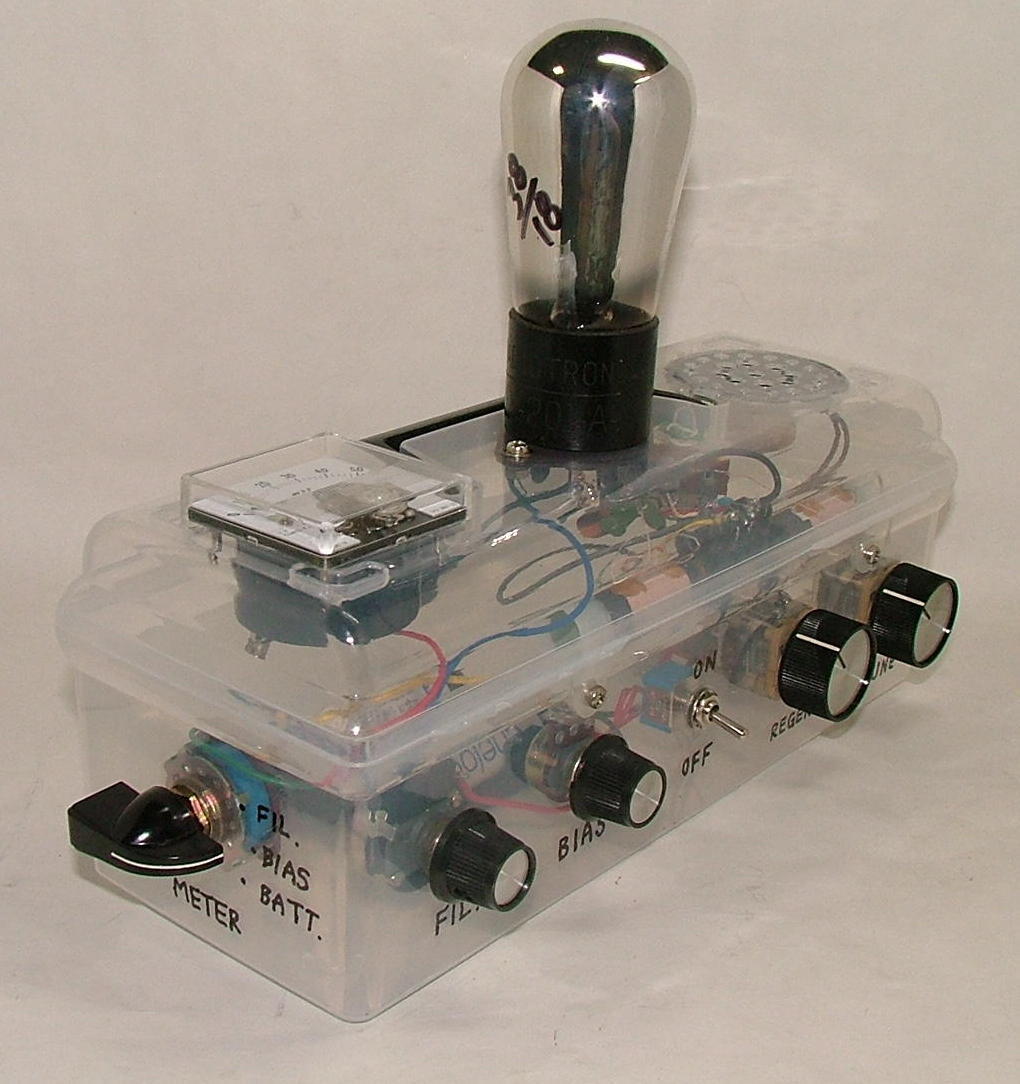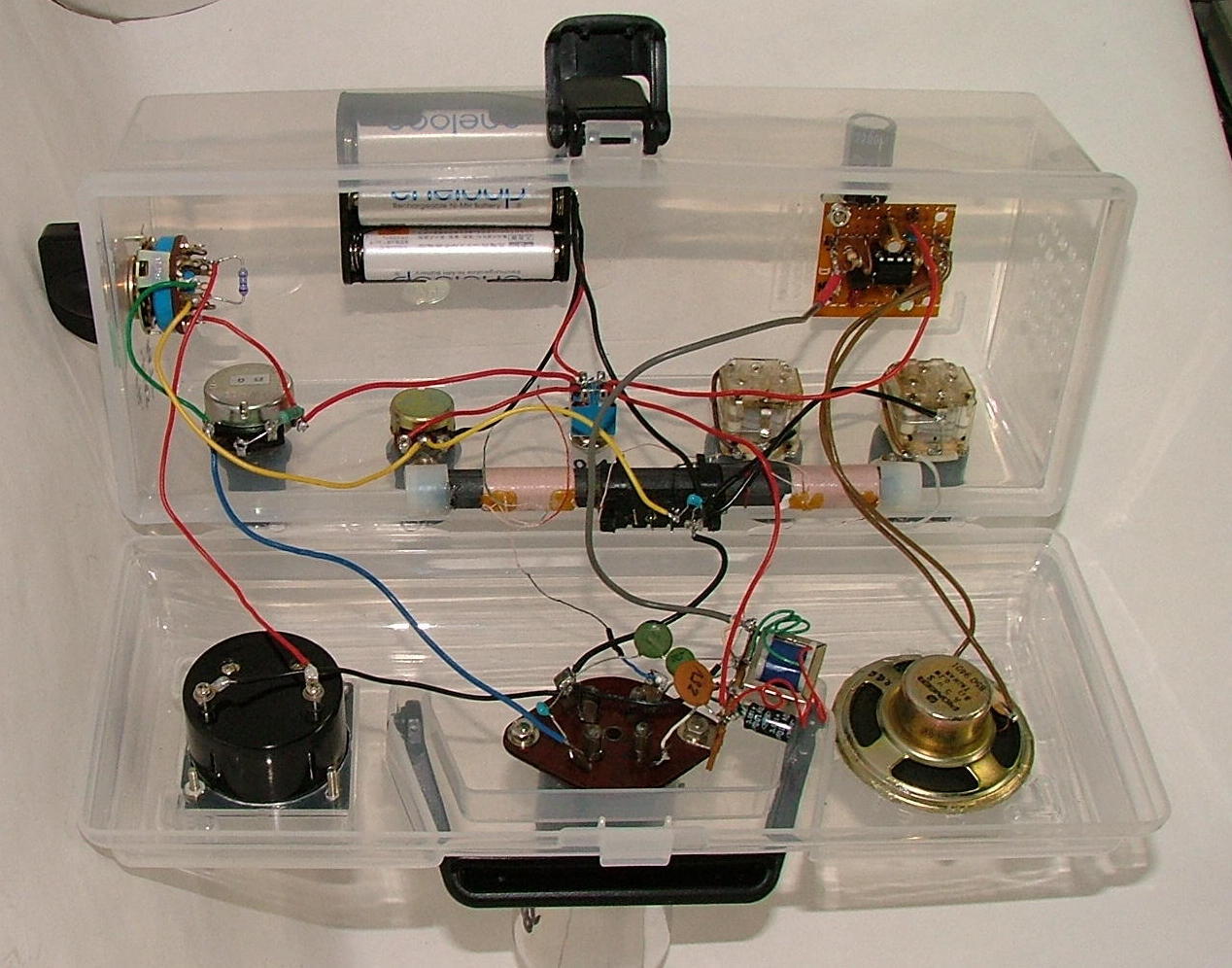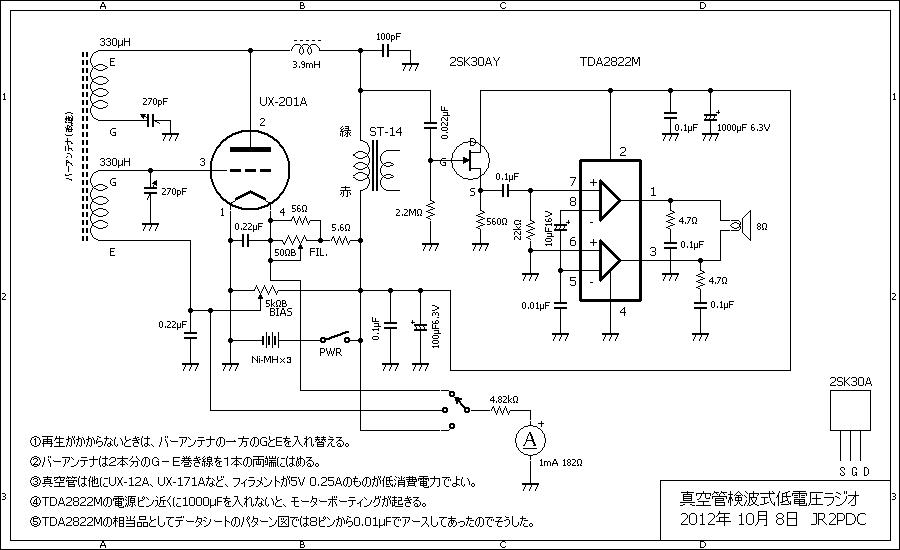低電圧で高感度な真空管式再生検波回路によるラジオ A sensitive regenerative radio with low filament/plate voltages


軍用無線機や測定器に詳しい、元ラジオ少年の○島さんが開発された方式のラジオです。UX-201A
や UX-12A などで再生検波し、IC式の低周波増幅回路でスピーカーを鳴らしています。ほかの
真空管でも鳴ります。WE 300B でも、傍熱管でも。回路図は下記です。

驚くのは、真空管のフィラメント電圧とB電圧です。単三のニッケル水素電池×3本(3.6V)で
すべてをまかなっています。なのに、普通の再生検波式のラジオより高感度で、都内や川崎では
外部アンテナなしでガンガン鳴ります。バーアンテナのおかげもあるかもしれませんが。真空管の
フィラメントは通常の5〜6.3Vの半分以下の電圧で点灯していますので、消費電力も通常の動作
状態よりかなり少ないです。だから単三サイズのニッケル水素電池×3本で動かせています。
私も最初は信じられなかったのですが、○島さんと私のほかに、○田さんも作って成功されました。
ただし、低周波増幅回路は真空管の低電圧動作というわけにはいきませんので、ICで作りました。
メーターはスイッチで切り替えて、電池の電圧、フィラメント電圧、バイアス電圧を読めるように
しています。
You will not believe this. This is a regenerative radio with a UX-201A or UX-12A tube (or
even WE 300B. Also, indirectly heated tubes) as a detector and with an IC type audio power
amplifier. The detector tube's filament voltage is less than 3.0V and the B voltage is less
than 3.6V! Believe it or not, it is very sensitive and requires no external antennas in
Tokyo metropolitan area and its suburbs maybe or partly thanks to the ferrite rod antenna.
A friend of mine, Mr. "O", noticed that, when he turned off a radio, the output voice became
a little louder for 0.5 seconds or so. He thought it had something to do with the falling
filament temperature and tried out low filament and plate voltages and discovered that the low
voltages operation made the detector very sensitive. That was over ten years ago.
Too bad the low voltage operation does not improve power amplifier.

